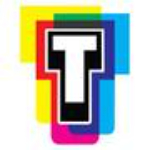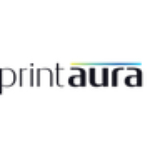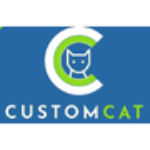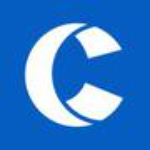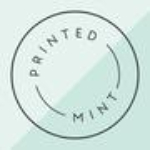List of Best Print On Demand Software
Showing 10 of 20 productsGooten is an innovative platform that simplifies the process of creating and selling custom products. With its user-friendly interface is a production methods, Gooten empowers businesses to easily expand their product offerings without the hassle of...Read Gooten Reviews
T-Pop, the newest revolution in the world of technology. With its innovative features and user-friendly interface, T-Pop promises to transform the way we think about software. From seamlessly managing tasks to streamlining communication, T-Pop has it...Read T-Pop Reviews
Print Aura is a top-notch, user-friendly print-on-demand platform that revolutionizes the way businesses create, sell and deliver their custom products. With a seamless integration process and a wide range of high-quality merchandise, Print Aura is t...Read Print Aura Reviews
Amplifier is a tool for enhancing and boosting your audio experience. This powerful device allows you to amplify and fine-tune the sound quality of any audio source with precision and ease. Say goodbye to subpar sound and hello to amplified perfectio...Read Amplifier Reviews
Zazzle is an innovative platform that empowers individuals and businesses to express their creativity and bring their ideas to life through a wide range of customizable products. With an extensive selection of high-quality items and easy-to-use desig...Read Zazzle Reviews
Ready to level up your business with top-of-the-line custom products? Look no further than CustomCat, is a solution for personalized merchandise. From t-shirts to mugs and everything in between, our platform offers seamless integration is a fulfillme...Read CustomCat Reviews
Cloudprinter is a groundbreaking platform that revolutionizes the way printing and publishing services are performed. Connecting printers and publishers worldwide, Cloudprinter eliminates geographical and logistical barriers, making it easier, faster...Read Cloudprinter Reviews
Apliiq is a software that is changing the way businesses manage their operations. With its user-friendly interface features, Apliiq simplifies complex tasks and helps organizations achieve their goals efficiently. Say goodbye to outdated methods and...Read Apliiq Reviews
Gelato is a creamy and delicious Italian dessert that has taken the world by storm. Made with high-quality ingredients and centuries-old techniques, Gelato offers a rich and indulgent taste that is unmatched. From classic flavors to unique combinatio...Read Gelato Reviews
Printed Mint is your go-to source for all things personalized and printed. Our mission is to provide unique, quality products that make every occasion special. With a diverse range of customizable items and a seamless ordering process, we are dedicat...Read Printed Mint Reviews
- What Is Print on Demand Software?
- Top Reasons Why Businesses Need Print on Demand Software?
- What Are the Top Key Features of Print on Demand Software?
- What Are the Top Benefits of Print on Demand Software?
- What Are the Steps to Choose the Right Print on Demand Software?
- What Are the Types of Print on Demand Software for Different Industries?
- What Are the Technology Trends for Best Print on Demand Software?
- What Are the Deployment Options for Print on Demand Software?
What Is Print on Demand Software?
Print on demand software is a computer program that is used to manufacture personalized printed products such as t-shirts, mugs, and personalized gifts without the need for significant inventories. This software creates a physical product by linking a user's data and photos to a printing service or large-format printer.
The user selects a product and uses the software to send the file to the printer. Then they indicate the number of copies they want printed, choose a payment method, and submit their order. The copies are then printed and shipped straight to the buyer by the printer.
Print on demand tools save time and money by eliminating the need to make huge orders of products ahead of time and then keep them until the client buys them. It also reduces the need for additional employees and resources to handle the printing process.
The best print on demand software is also beneficial to entrepreneurs who wish to establish their own firms because it allows them to customize their items without investing in vast stocks or expensive equipment. Furthermore, because the products are printed and supplied directly to the buyer, it might help to cut shipping expenses.
Top Reasons Why Businesses Need Print on Demand Software?
1. It simplifies the manufacturing process and reduces manual labour.
2. It makes ordering and fulfilment easier.
3. It contributes to order accuracy and consistency.
4. It aids in the reduction of inventory expenses and waste.
5. It enables businesses to effortlessly customise orders based on the demands of their customers.
6. It improves efficiency by removing manual processes and enabling online ordering.
7. It shortens turnaround times by allowing items to be picked, packed, and sent more quickly.
8. It allows businesses to sell products in a variety of sizes and colours, allowing shoppers to pick the perfect item.
9. It aids in the cost-cutting of materials, ink, and manpower.
10. It gives firms access to cutting-edge printing technologies.
11. It enables enterprises to boost their market presence cost-effectively.
12. It helps to shorten lead times by reducing the need to wait for traditional suppliers to supply.
13. It expands enterprises' potential to produce more money.
14. It enables scalability, allowing organisations to easily change production to suit client demand.
15. It enables firms to make modifications on the fly and offer customised items to clients.
What Are the Top Key Features of Print on Demand Software?
Print-on-demand software offers a range of key features to make printing and ordering products easier and more efficient.
These features include:
1. On-Demand Printing: The best print-on-demand software allows you to print things on demand, which means that orders may be printed as they come in rather than needing to print a large batch of products ahead of time. This saves time and money by lowering the amount of inventory that must be stored.
2. Automated Fulfillment: Print-on-demand software can employ automated fulfilment services to route orders to the appropriate fulfilment house and provide real-time order tracking and status updates. This helps to guarantee that orders are delivered to the correct place and that customers are aware of the status of their orders.
3. Automated Design Uploads: Users can simply create and change product designs, including text, photos, and other components, using automated design uploads. This speeds up the design process and ensures that customised product designs are submitted and printed accurately.
4. Integration with Online Stores: The majority of top print-on-demand software interacts with popular online retailers like Shopify and WooCommerce. This enables vendors to effortlessly list their products across different platforms, as well as automate order fulfilment and product administration.
5. Customer Analytics: Sellers can use the top print-on-demand software to track critical statistics such as consumer demographics, order frequency, purchase history, and more. This makes customising products and targeting the correct customers easy.
6. Scheduled Production: Scheduled production guarantees that orders are produced in accordance with the user's specifications and that no production delays occur. This helps to ensure that products are produced on time and delivered to clients as soon as possible.
7. Automated Shipping & Payment Processing: Orders and payments from different sources can be easily managed with automated shipping and payment processing. This helps to cut expenses and expedite order fulfilment.
8. Automated Customer Support: Businesses can provide speedier customer service and reply to enquiries using automated customer assistance. This contributes to ensuring that clients are satisfied with the things they receive.
What Are the Top Benefits of Print on Demand Software?
1. Automation of print orders: Print-on-demand software automates the entire print order processing process, minimizing the need for manual labor and saving organizations money.
2. Fast turnaround times: The top print-on-demand software can drastically cut the time it takes to complete a print order. Customers may benefit from shorter turnaround times, resulting in higher customer satisfaction.
3. Cost savings: Traditional printing methods necessitate a huge inventory of printed materials, which can be costly. Businesses can acquire the same amount of printed content for a fraction of the cost by using the top print-on-demand software.
4. Flexible production capabilities: The best Print-on-demand software can be used to print a wide range of materials, such as shirts, mugs, and bags. This enables organizations to swiftly and efficiently create bespoke items.
5. Sustainable printing practices: To reduce paper and ink waste, top print-on-demand software uses ecologically friendly technologies such as digital printing and waterless printing. This can assist firms in reducing their environmental impact.
What Are the Steps to Choose the Right Print on Demand Software?
1. Gather Your Materials: Determine your exact requirements and make a list of critical characteristics that the software should have. Consider your budget, staff resources, integration requirements, and any other considerations that may influence your decision.
2. Investigate Available Software: Investigate software companies and their websites to learn about their offerings.
3. Compare Software: Create a comparison matrix summarising the features, benefits, and drawbacks of the available software solutions.
4. Contact Vendors: Speak with the vendors about their experience and the solutions they can provide.
5. Evaluate offers: Evaluate the software offers from suppliers and choose the best fit for your needs.
6. Request a Demo: Request a demonstration of the vendor's product to check that it meets all of your needs.
7. Negotiate Contract Terms: Work with the vendor to negotiate contract terms and agree on a payment plan that works for both parties.
8. Contract Execution and Service Activation: Execute the contract and activate the service.
What Are the Types of Print on Demand Software for Different Industries?
Print on Demand (POD) software is software used by companies across various industries to quickly and efficiently create printed products, such as brochures, flyers, catalogs, business cards, magazines, and promotional materials. The top print-on-demand software streamlines the entire printing process, from the artwork creation to the fulfillment of the printed products.
The types of best print-on-demand software for different industries include:
1. Graphics and provides publishing software: Graphic designers, publishers, and printers utilize POD software to efficiently develop and deliver printed items. Adobe InDesign and Adobe Acrobat are two popular pieces of software.
2. Web-to-print software: This form of print on demand tools is used to design and print personalized products (such as t-shirts, mugs, and caps) from the internet. Magento, Shopify, and Printful are examples of popular web-to-print software.
3. Digital printing software: Commercial printers employ this type of software to generate high-quality prints in a short amount of time. HP Indigo, SunDance Direct, and iGen are examples of popular applications.
4. Packaging software: Packaging wholesalers and retailers use this software to generate customized packaging solutions. Insofts, XEIKON, and Esko are examples of popular packing software.
What Are the Technology Trends for Best Print on Demand Software?
The technology trends for best print-on-demand software include:
1. Automation: Printing techniques that are automated are becoming increasingly common in order to expedite the printing process and reduce the quantity of manual labor needed. Automation frequently refers to software's ability to automatically prepare and print orders.
2. Cloud-Based Solutions: Cloud-based solutions offer greater flexibility and scalability, allowing organizations to simply scale up or down in response to demand. They also provide greater data protection and storage capacity for large print orders.
3. Digital Print Management: Businesses can use digital print management services to handle their orders in a centralized database. Users may now track their orders, check inventory status, and simply produce reports. Because of its automated operations, digital print management also enables firms to customize their orders and produce high-quality prints.
4. Integrated Shipping Solutions: Top print-on-demand services are frequently connected with major shipping companies such as UPS, FedEx, and DHL. This enables businesses to transport orders to clients all around the world with ease.
5. Personalization: Personalization enables firms to generate unique prints for each consumer. This contributes to a more personalized experience for clients while also increasing customer loyalty.
What Are the Deployment Options for Print on Demand Software?
Print-on-demand software deployment choices are generally divided into three categories: self-hosted, cloud-based, and on-site.
1. Self-hosted solutions can be configured and operated locally on an existing server infrastructure. This sort of deployment gives you complete control over the software's security and maintenance, as well as the flexibility to customize its features to better meet the demands of your business.
The disadvantage of this approach is the high initial and recurring fees, which can quickly add up.
2. Cloud-based solutions enable organizations to access and control their top print-on-demand software from any internet-connected device. This deployment solution often has very cheap upfront costs and does not require expensive hardware.
The disadvantage of this solution is that, because the software is hosted off-site, firms may have less control over its security and upkeep.
3. Businesses can install and host print-on-demand software on their own servers with on-site solutions. The primary advantage of this sort of deployment is the comprehensive control, customizability, and security it offers.
The disadvantage is the greater initial expenses connected with both installation and equipment, as well as the necessary maintenance and support.

